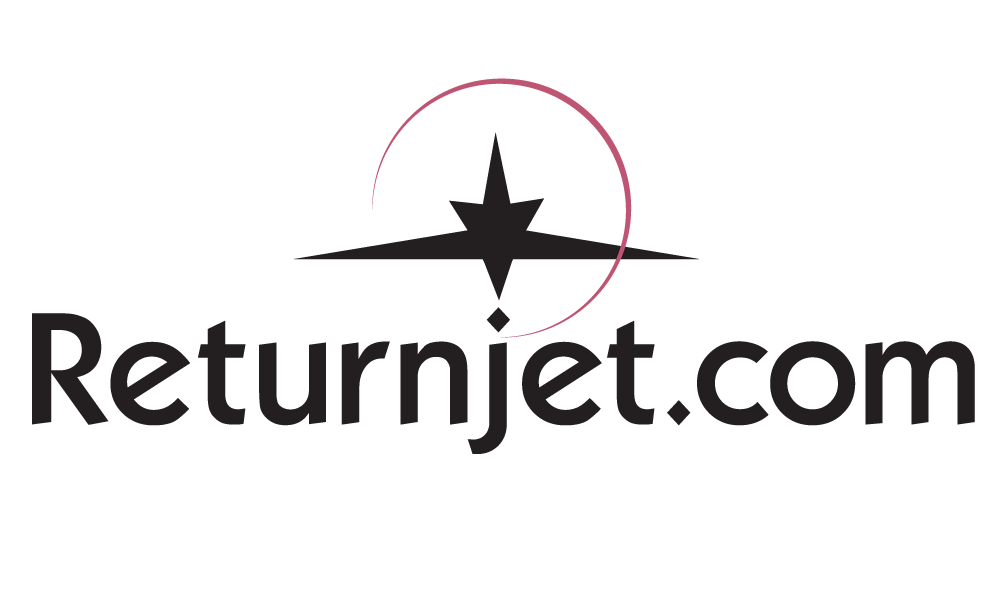September saw charter search platform Returnjet celebrate its 5th anniversary. With so many technology starts ups failing before they really leave the starting gates, what does the Returnjet team put down as the secret to their success? CEO Mark Blanchfield and Aviation Director Steve Westlake share their thoughts on how they have maximised the positive and avoided the common pitfalls that see so many new businesses fail.
“The best ideas are often the simplest”
CEO Mark Blanchfield explains “The idea for Returnjet came about when I was searching flights to book a trip for my family. Drawing a blank on domestic flights I turned to commercial empty legs to see what was available. It then occurred to me that there must be a market for private clients to search empty legs, effectively opening up a new booking channel that was otherwise locked off.”
He continues “The best ideas are often the simplest and I knew that Returnjet’s purpose was simple and easy for the market to understand. The challenge was going to be taking the very complex and intricate algorithms and calculations required to deliver the functionality and turn these into an interface that gave a simple and user-friendly experience. We had to prove that we could ‘hide the wiring’ to make the Returnjet experience as simple and smooth as possible – UX was everything and still remains one of the key things that differentiates us from other platforms.”
And of the target market? “Whilst we originally considered a solution for private clients, knew there was heavy competition in that market space. Far better surely to support the channel to market. So that’s exactly what we did – created a new alternative solution that could give Brokers and Operators what they required to run their businesses without the constraints of hefty subscriptions and tie in periods.”
“We made sure that we were solving a real market problem, rather than running a vanity project”
Steve Westlake comments “We had to be really clear from the get-go about our objective and market proposition. There already were platforms that claimed to be independent, but the reality was quite different with a number being broker backed. This is still the case today. We on the other hand wanted our transparency to be a real risk reducer for the charter market, and create a platform which allowed brokers and operators to communicate directly when and how they chose.”
Blanchfield explains the strategy to capture the next generation of charter professionals “In the immediate future we will start to see our users transform into ‘digital natives’; those that have grown up with LinkedIn, Facebook, Instagram and Google, and who do not expect to have to pay for online interactions. So why try to compete on price with the likes of Avinode? Let’s just bring out a game changing option for the market – where there’s nothing to pay, which is a bonus for the current market and an expectation from those entering the charter arena.”
Blanchfield continues “We know it’s working and we know that we are starting to steal ground. Avinode recently ran an AdWords campaign called ‘Alternative to ReturnJet’ – we took that as a real compliment!”
“Team dynamics can be the difference between success and failure.”
Returnjet is a tech company, with a tech product, but without the right people behind the scenes even the most innovative technology wouldn’t sustain the business. With a group of professionals comprising aviation, technology, sales, customer service and marketing experts, how has this dynamic shaped the success of the Returnjet platform?
Blanchfield shares his thoughts as he explains “Getting the team right, from the very beginning, has had a huge impact on our ability to drive forward as a business. Working as part of a small , but growing team brings with it certain pressures and it takes a particular kind of individual to thrive in this growth stage of any business. I feel personally very fortunate to have been able to bring the team we have together – we play to each other’s strengths and share the same passion for the platform and work culture.”
Westlake agrees “Having a team who were adaptable and flexible was key to our ongoing success. Through the early stages of any business, the operation needs to be agile and able to flex with market opportunity and demand – and the people in the operation need to be able to do the same. Challenging? Yes. Rewarding? Definitely!”
“We got a good handle on cash burn so we knew what we were in for”
Cashflow is the one of the most fundamental challenges that a new business will face and can make or break a business. How has Returnjet managed the cash to steer the business through the early years?
Blanchfield explains “We knew from the very outset that the business model would require heavy investment at the front end and an ongoing financial commitment to see the business through development and innovation cycles. We’re in an industry that doesn’t stand still and we were fully aware that we had to get a good handle on cash burn so we knew what we were in for.”
Westlake concurs “No successful business can afford to stand still and never more so than in the case of tech companies. We don’t have an end goal in place for the platform – it’s a solution that will continue to evolve organically and whilst it can continue to offer a credible differential to the charter market, we will continue to build. That said, we are a business and need to generate revenue. That’s where our advertising revenue comes in. Again, thought, to have a strong advertising proposition you have to provide a product that has market confidence, proven statistical performance and a credible brand presence. This was never going to happen overnight and with our advertising revenue really starting to have an impact in year four, it tied in with the forecast we set originally.”
“A healthy dose of realism goes a long way”
Speaking of the Returnjet teams culture, Blanchfield comments on the power of realism.
“Whilst we could see the advantage and the benefits of Returnjet for the broker and the operator, we also accepted that asking people to change a behaviour, even one they weren’t that keen on, was not going to happen overnight. We planned our model accordingly and set realistic forecasts for user acquisition.”
Westlake expands “We welcomed some early adopters from both the Broker and Operator fields and this gave us the required product outputs to complete quote requests. But we knew that our business would only really have any longevity if we could offer more aircraft than the major competitors. Offering a free service is all well and good but it must deliver a result for everyone involved. With time being an increasingly expensive commodity, we didn’t, and still don’t want to waste anyone’s.”
“We also accepted that the platform was a developing proposition and that going head to head with a well-established multi-million-pound platform was not going to yield the results we wanted. Managing the markets expectation was crucial and I believe we have continued to do this.”
“Looking back Returnjet has followed the traditional storm, norm, perform cycle and it’s in the last 18 months that we have started to see the platform gaining real traction, with an upwards trend for regular repeat visits to the site and a steady stream of new registrations, for both Brokers and Operators. Having been able to financially and operationally hold our nerve has got us to exactly where we wanted to be. Confidence in the product has steadily increased over time, the heavy weight partners that have chosen Returnjet, either as a tool or as an advertising channel are putting paid to the sceptics.”
“The future is really exciting – bringing in the best technologies to build on our base package.
Records show that as Returnjet was preparing to enter its 5th anniversary year, August 2017 turned out to be its most active month since the platform went live, with a record number of Brokers accessing the system and submitting quote requests.
So how do the management team feel about the onward trajectory for Returnjet?
“The platform is in a very strong position and the feedback we are receiving from new and existing users proves this. That said, we have a number of new user functions in Beta which we are hoping to release over the coming 12 months to offer all users a wider suite of Returnjet tools and in effect create a totally tailored package” says Westlake.
“Some of the new developments include the Returnjet Broker App which has been in beta release for some months now. We are also working with the technology team to create tiered user packages which provide carefully selected additional tools and features. In addition to these larger projects, our tech teams are constantly adding new tools and features to the Operator and Broker dashboards, all designed to make the platform more intuitive and easier to use. These elements are part of our ongoing UX enhancement initiative.”
“Outside of the core platform functionality we have significant R&D happening right now focusing on more specialist charter needs. But across all of our developments, our commitment to user experience remains at the heart of everything. Our point of difference and the way we generate revenue will be key drivers. Subscription models which demand high fees will have to offer even stronger clarity around their value – and charging for web based solutions, already an alien concept to the millennials and Generation Z, will only become more of an unnatural proposition.”
The secret of your success?
All things considered it seems Returnjet is in great shape. A stable technology, a proven business model, a real point of difference and the strength and vision to move onto the next stage of an exciting development programme. A success? It certainly seems so! So what’s the secret?
Blanchfield concludes “The secret? Finding the gap in the market and then building a business around that. It may sound obvious but I think many business start-ups try and do a me-too and rather than finding a market gap try to push in on an existing market. That’s not to say this strategy can’t work, but you must be better and have substantial cash behind you to compete. Building a business from a real-life experience gives much greater confidence for market acceptance as its built from an established need – a proven gap in the market”

